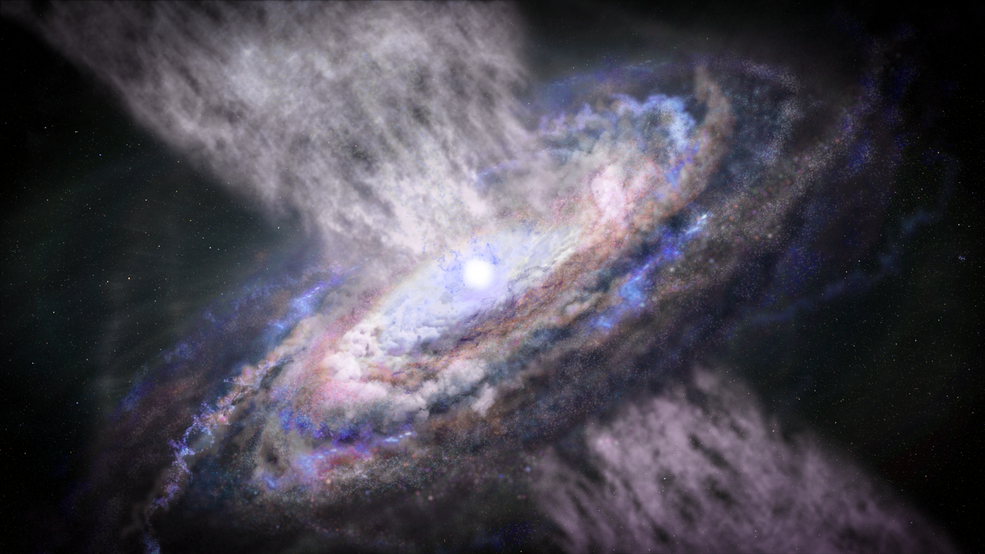|
|

|
 |
|
 |
|
|
 |
|
 |
 |
|
 |
|
| NASA's Webb to Study Quasars and Their Host Galaxies in Three Dimensions |
Supermassive black holes, which likely reside at the centers of virtually all galaxies, are unimaginably dense, compact regions of space from which nothing — not even light — can escape. As such a black hole, weighing in at millions or billions of times the mass of the Sun, devours material, it is surrounded by a swirling disk of gas. When gas from this disk falls towards the black hole, it releases a tremendous amount of energy. This energy creates a brilliant and powerful galactic core called a quasar, whose light can greatly outshine its host galaxy.Astronomers widely believe that the energy from quasars is responsible for limiting the growth of massive galaxies. Shortly after the launch of NASA’s James Webb Space Telescope, scientists plan to study the effect of three carefully selected quasars on their host galaxies in a program called Q3D.A supermassive black hole is very small compared to its host galaxy — it’s the equivalent of a penny in relation to the size of the entire Moon. Still, supermassive black holes have an immense influence on the galaxies they inhabit.“Physically very small objects, supermassive black holes seem to have an enormous impact on the evolution of galaxies and eventually on the way our universe looks today,” said Q3D principal investigator Dominika Wylezalek, a Research Group Leader at the University of Heidelberg in Germany. Two decades ago, scientists hypothesized the critical role of quasars in limiting galaxy growth, but specific observational evidence has been surprisingly hard to come by. Scientists think a quasar’s torrential winds push out the equivalent of hundreds of solar masses of material each year. As the quasar winds sweep across the galaxy's disk, material that otherwise would have formed new stars is violently carried away from the galaxy, causing star birth to cease. But observing the power and reach of quasars on their host galaxies remains a major unresolved issue in modern astrophysics. The Webb telescope could change that.
Quasars—accreting supermassive black holes—are paradoxically some of the brightest objects in the universe. Astronomers widely consider the energy from quasars to be the main driver in limiting the growth of massive galaxies. Scientists plan to use Webb to study the impact of three carefully selected quasars on their host galaxies in a program called Q3D. |
|
|
|
 |
|
 |
|
|
Copyright? Purple Mountain Observatory, CAS, No.10 Yuanhua Road, Qixia District, Nanjing 210023, China
Phone: 0086 25 8333 2000 Fax: 8333 2091 http://english.pmo.cas.cn |
|
|
